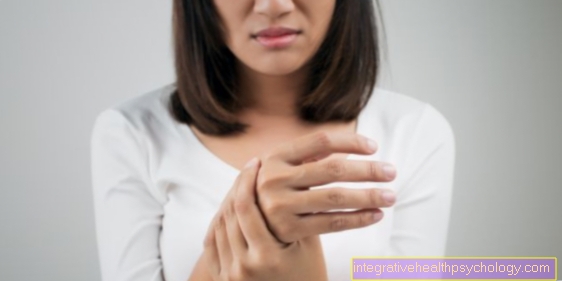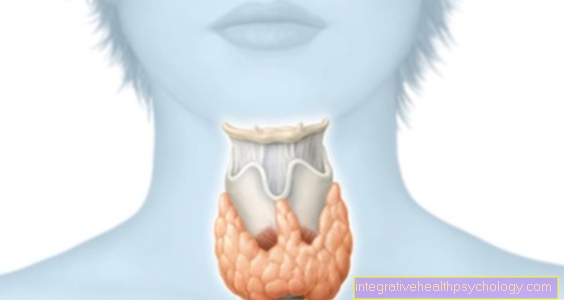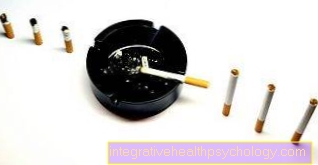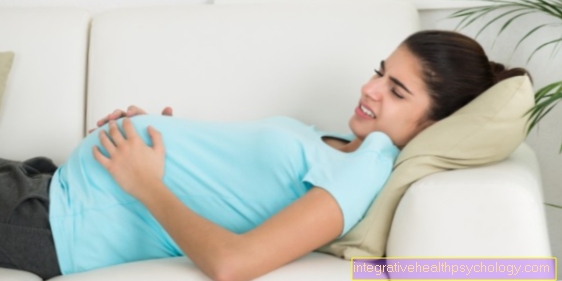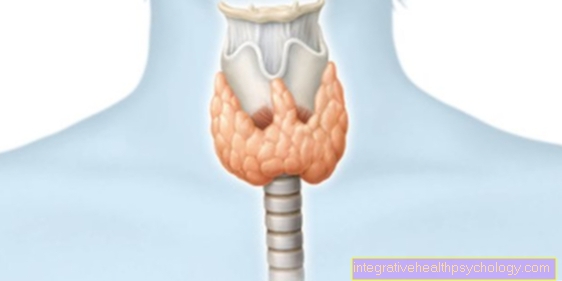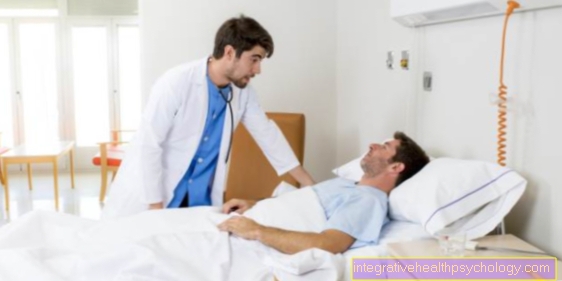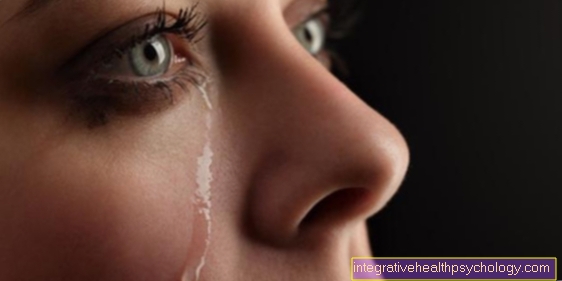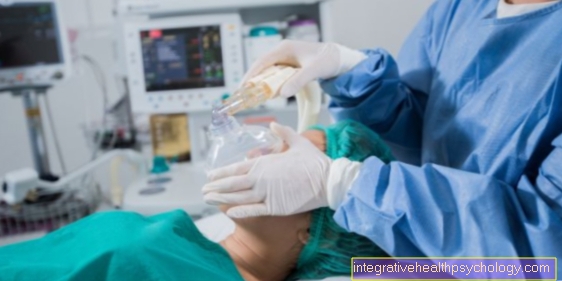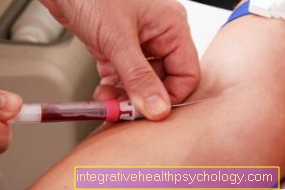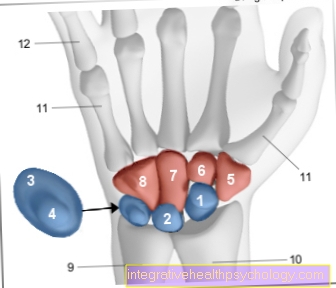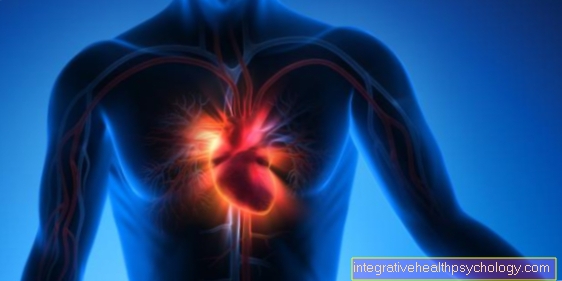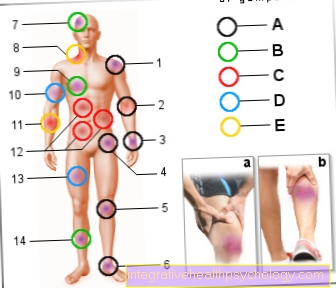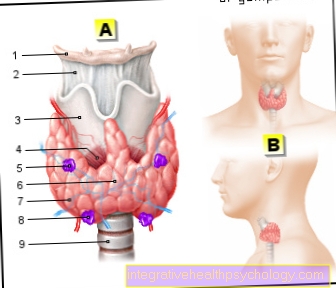Side effects of the pill
Causes of the side effects of the pill
The birth control pill is a very common method of contraception. It is a hormone preparation that, depending on the type of pill, supplies the body with estrogens and progestins. Compared to single-phase and two-phase preparations, minipills consist only of progestins. The pill thus interferes strongly with the hormonal balance of women, keeps the estrogen and progestin concentration in the body high and thus prevents the production of the hormones FSH (Follicle-stimulating hormone) and LH (Luteinizing hormone). This will prevent ovulation.

The hormones estrogen and progestin not only have an influence on the woman's cycle, but are also assigned other functions that explain the sometimes extensive side effects of the pill. For example, estrogen slows the growth of bones and has a positive effect on bone formation. It also has a protective effect on blood vessels.
What are the side effects of the pill?
In addition to the tasks of estrogen mentioned above, there are also many effects of the hormone that lead to negative effects in the body to lead.
For one, it affects the clotting of the blood in the body, which is what that Increased risk of thrombosis, and retains more water and sodium chloride (NaCl) in the body.
Second, it can be by ingesting it nausea and occasionally diarrhea such as Spotting and intermenstrual bleeding come. Allergic reactions and hypersensitivity disorders are rarely described.
It can too Changes in weight and appetite come. a headache (perhaps migraine), nervousness, dizziness and Mood swings appear more often when taking the pill. A Decrease in libido, i.e. the sexual instinct, can occur, in some cases this can also be greatly increased. The Chest can become tender and she can increase in size. The The strength of the menstrual period may change, as well as the Purity of the skin. Taking the pill is the risk for some tumors and Diabetes mellitus elevated.
The most important side effects are explained in more detail below.
Weight gain from the pill?
A commonly discussed side effect of the pill is weight change. In individual cases it can lead to severe weight gain. In some cases however, a weight reduction is also reported.
Weight gain generally results from either muscle building, water retention, or an increase in body fat. The pill retains more water and NaCl in the body, so leads to water retention and an increase in body fat is discussed. Combination preparations are intended to Increase appetiteso that Body fat can at least increase through increased food intake. Scientific proof of a general strong weight gain in hormonally contraceptive women has not yet been found, as there are no good studies on this. Women usually gain weight continuously over the yearsregardless of whether they take the pill or not. Therefore, a strong influence on the weight of women is classified as unlikely. In individual cases, however, there can still be significant changes in weight.
Thrombosis from the pill?
The birth control pill increases the risk of thrombosis in women, often young. With a thrombosis it comes to Formation of a blood clot in a vessel that can be completely closed. It can also become a Carryover of the clot come so that other, often vital, vessels are closed. This happens, for example, with a Pulmonary embolism. However, it can also affect a leg vessel, for example, so that it becomes a Leg vein thrombosis comes. The risk of such a thrombosis is increased while taking the pill, as it is the number of coagulation factors increases. These are important for closing wounds and, if too high, can lead to thrombi. also the pill reduces the number of antagonists of the coagulation factors, i.e. the factors that are actually supposed to prevent excessive coagulation.
There are Differences in the pill preparations with regard to the increased risk of thrombosis. In particular, the new third and fourth generation anti-baby pills are associated with an increased risk of thrombosis due to their progestin (especially desogestrel, dienogest, gestoden and drospirenone). But it is important that The risk of thrombosis increases, especially in the first few months after taking the pill is, then it sinks again enormously. also smoking greatly increases the risk. The combination of smoking and taking the pill should therefore be avoided. Also being very overweight can increase the risk.
Pimples through the pill?
The birth control pill can cause blemishes like acne, Rash, Pigment disorders from taking the pill, increased body and facial hair such as Hair loss in women to lead. Much more common, however, is from one targeted use of the pill for acne reported. This is particularly noticeable in young women. The main cause of acne is because the body increasingly produces the male sex hormone androgen during puberty. The The hormones in the pill weaken the effect of the androgen and can thus counteract acne. The active ingredients dienogest, drospirenone, cyproterone acetate and chlormadinone are said to be particularly effective. However, birth control pills are not approved for the specific treatment of acne. In addition, as described, it shows a high potential for side effects, so that the intake should be carefully considered.
Psychosis from the pill?
As psychosis is called a group of serious mental illnesses in which there is temporarily to an almost complete loss of reference to reality comes. Typical psychotic syndromes are Mad life (false beliefs of reality) or Hallucinations (Sensory perception without a realistic stimulus). So far, no connection between psychosis and taking the pill has been found.
Depression from the Pill?
Mood swings or even depression can occur while taking the contraceptive pill. The package insert for the pill warns against this. Many women report that they are depressed or that they are more unbalanced when they take the pill. A clear indication of a connection between a manifest, diagnosed depression and the pill has not yet been found. A 2016 study showed an increased prescription of antidepressants in Danish women who take the pill. This can be an indication of an increased incidence of depression when taking the pill.
Read more on the subject at: Depression from the pill - is there anything to it?
Pill Cancer?
Breast cancer is used in women who take the pill, diagnosed a little more often than in women of the same age who do not take the pill. When the pill is discontinued, after ten years no difference can be found between previous pill users and other women. However, it should be noted that breast cancer is quite rare in women under 40 years of age, so the additional risk from the pill is quite small compared to the overall risk of breast cancer.
The pill can in rare cases benign liver tumors (focal, nodular hyperplasia and liver cell adenomas) and in very rare cases malignant liver tumors (Liver cancer) to lead. The pill also increases the risk for cervical cancer. In contrast, long-term use of an estrogen and progestin pill is supposed to Risk of uterine cancer (Endometrial cancer) and ovarian cancer (Ovarian cancer) reduce.
When do the side effects start?
When the side effects of the pill start is very different and depends on the type of side effect. The body takes some time to get used to the hormone levels. The common side effect of Spotting and breakthrough bleeding are common, especially at the beginning of use. Such bleeding was observed in half of the women within the first six administration cycles. If this irregular bleeding persists three months after starting the pill, a doctor should be consulted. Some women report new side effects after taking the pill for years. It should be emphasized once again that the increased risk of thrombosis due to the pill is increased, especially in the first few months.
What are the side effects of stopping the pill?
A variety of side effects can occur when the pill is stopped. There is no general answer to which women can be found with which women. The body has to adjust to the new hormonal balance and this takes time, possibly even several months. This transition phase of the body can lead to irregular menstrual periods (Menstrual irregularities), which may be intensified or weakened. Sometimes there is even no menstruation.
It can be assumed that half of women who stop the pill will have a normal cycle again after a short time. For the remaining 50 percent of women, it usually takes a few months for the menstrual cycle to be regular and normal again. A woman's fertility also depends on the menstrual cycle. It often takes time for a woman to become pregnant. When this happens varies greatly from person to person. By stopping the pill weight changes may occur and skin purity, which may have been positively influenced by the pill, can change. Sudden hormone withdrawal can adversely affect women's mood. Especially women who have been taking the pill for several years suffer more often in the first time after stopping it Mood swings and listlessness.
What are the side effects of taking the pill?
Many women make a conscious decision to take the pill. This means that after 21 days you do not take the pill but take a break immediately start taking the next slide. This procedure is called "Long cycle". Thereby In most cases there is no menstrual period during this time, which can have many advantages for everyday life. Often women use that severe abdominal pain during or before your bleeding have this option. It is often recommended to take a seven-day break after three slides.
Overall, most women can take the pill very well. However, it can increase when taking the pill especially at the beginning of the long cycle Spotting and intermenstrual bleeding come. In this case, stop taking the pill and allow bleeding. In addition, when swallowing is more frequent of Abdominal pain from the pill reported.



